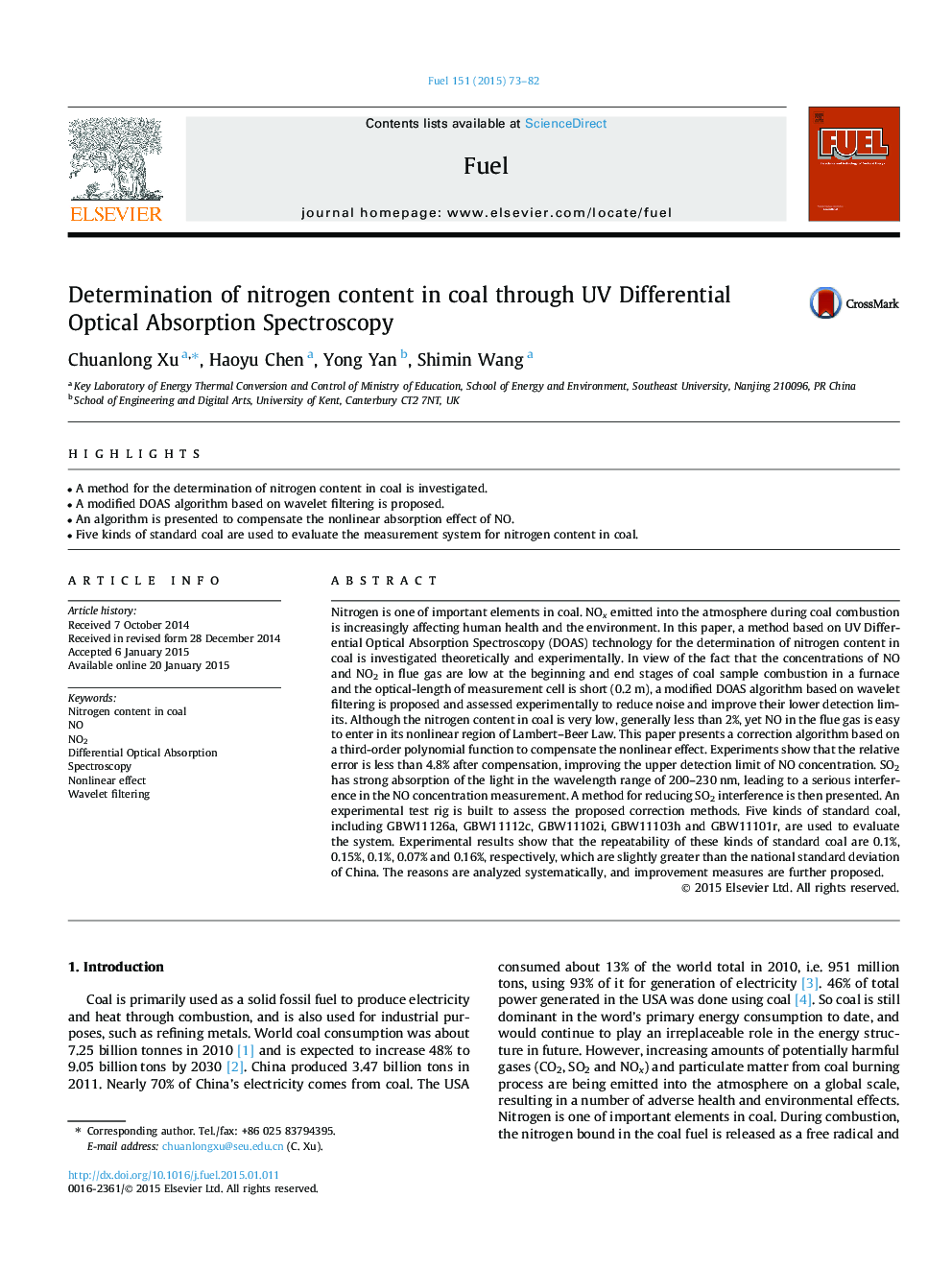| Article ID | Journal | Published Year | Pages | File Type |
|---|---|---|---|---|
| 205615 | Fuel | 2015 | 10 Pages |
•A method for the determination of nitrogen content in coal is investigated.•A modified DOAS algorithm based on wavelet filtering is proposed.•An algorithm is presented to compensate the nonlinear absorption effect of NO.•Five kinds of standard coal are used to evaluate the measurement system for nitrogen content in coal.
Nitrogen is one of important elements in coal. NOx emitted into the atmosphere during coal combustion is increasingly affecting human health and the environment. In this paper, a method based on UV Differential Optical Absorption Spectroscopy (DOAS) technology for the determination of nitrogen content in coal is investigated theoretically and experimentally. In view of the fact that the concentrations of NO and NO2 in flue gas are low at the beginning and end stages of coal sample combustion in a furnace and the optical-length of measurement cell is short (0.2 m), a modified DOAS algorithm based on wavelet filtering is proposed and assessed experimentally to reduce noise and improve their lower detection limits. Although the nitrogen content in coal is very low, generally less than 2%, yet NO in the flue gas is easy to enter in its nonlinear region of Lambert–Beer Law. This paper presents a correction algorithm based on a third-order polynomial function to compensate the nonlinear effect. Experiments show that the relative error is less than 4.8% after compensation, improving the upper detection limit of NO concentration. SO2 has strong absorption of the light in the wavelength range of 200–230 nm, leading to a serious interference in the NO concentration measurement. A method for reducing SO2 interference is then presented. An experimental test rig is built to assess the proposed correction methods. Five kinds of standard coal, including GBW11126a, GBW11112c, GBW11102i, GBW11103h and GBW11101r, are used to evaluate the system. Experimental results show that the repeatability of these kinds of standard coal are 0.1%, 0.15%, 0.1%, 0.07% and 0.16%, respectively, which are slightly greater than the national standard deviation of China. The reasons are analyzed systematically, and improvement measures are further proposed.
